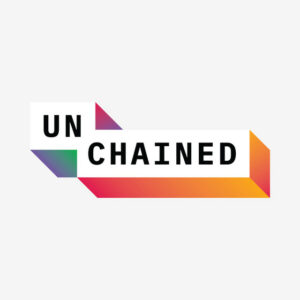The Celo blockchain has proposed a framework for its transition to a Ethereum Layer 2 network, with Optimism, Polygon and Matter Labs all competing to provide the underlying infrastructure.

Photo by Sander Weeteling on Unsplash
Posted November 30, 2023 at 12:36 am EST.
cLabs, the entity behind the Celo blockchain, plans to complete its evaluation of technology stacks for its transition to a Layer 2 blockchain by mid-January next year.
In a Wednesday post on its governance forum, cLabs unveiled a proposed framework for evaluating different L2 stacks before it makes the switch, and prompted the community for input and suggestions.
Earlier this year, the community approved a plan for the network to transition to a Layer 2 blockchain, and at the time, named Optimism’s OP Stack as its architect of choice. However, in the months that followed the proposal, Polygon and Matter Labs put forth their own proposals for Celo to adopt their tech stacks instead.
There are primarily two types of Ethereum rollups that exist today – Optimistic rollups and ZK-rollups. While some inherent features differ, these scaling solutions are both designed to increase transaction throughput and load on the base chain.
OP Labs builds Optimistic rollups, and runs the OP Mainnet which commands 26% of the Layer 2 market. Coinbase’s Layer 2 Base also uses the OP stack for its network and is the second core developer of the open-source network.
Polygon and Matter Labs build ZK-based rollups, and run their own Layer 2 networks zkSync Era and Polygon zkEVM.
“Note that we are selecting codebases and sub-components here, so we feel it is less useful to directly compare metrics like TVL, transaction count, users, except as indicators of what a closer collaboration and/or shared bridge between the two ecosystems could look like in future,” said the cLabs team.
The team emphasized that the exercise was not necessarily for the purpose of selecting the “best L2 stack,” but rather to choose which infrastructure providers had the codebase that was the best fit for Celo’s technical needs.
- SEO Powered Content & PR Distribution. Get Amplified Today.
- PlatoData.Network Vertical Generative Ai. Empower Yourself. Access Here.
- PlatoAiStream. Web3 Intelligence. Knowledge Amplified. Access Here.
- PlatoESG. Carbon, CleanTech, Energy, Environment, Solar, Waste Management. Access Here.
- PlatoHealth. Biotech and Clinical Trials Intelligence. Access Here.
- Source: https://unchainedcrypto.com/celo-releases-framework-for-selecting-layer-2-stack/
- :has
- :is
- :not
- 12
- 2023
- 30
- 31
- 32
- 35%
- 36
- a
- adopt
- All
- also
- am
- and
- approved
- ARE
- AS
- At
- base
- before
- behind
- BEST
- between
- blockchain
- both
- BRIDGE
- build
- builds
- but
- by
- Celo
- chain
- choice
- Choose
- cLabs
- closer
- Codebase
- Coinbase’s
- collaboration
- community
- compare
- competing
- complete
- Core
- core developer
- could
- designed
- Developer
- differ
- different
- directly
- Ecosystems
- emphasized
- entity
- Era
- ethereum
- Ethereum Layer 2
- evaluating
- evaluation
- Except
- Exercise
- exist
- Features
- feel
- fit
- followed
- For
- forth
- Forum
- Framework
- future
- governance
- had
- here
- High
- However
- HTTPS
- in
- Increase
- Indicators
- Infrastructure
- inherent
- input
- instead
- IT
- ITS
- l2
- Labs
- layer
- Layer 2
- less
- like
- load
- Look
- look like
- mainnet
- MAKES
- Market
- Matter
- max-width
- Metrics
- months
- Named
- necessarily
- needs
- network
- networks
- next
- November
- of
- on
- OP
- open source
- Optimism
- Optimistic
- Optimistic Rollups
- own
- photo
- plan
- plans
- plato
- Plato Data Intelligence
- PlatoData
- Polygon
- Polygon zkEVM
- posted
- primarily
- proposal
- Proposals
- proposed
- provide
- providers
- purpose
- put
- rather
- Releases
- Rollups
- Run
- runs
- Said
- scaling
- Second
- selecting
- shared
- So
- Solutions
- some
- stack
- Stacks
- Switch
- team
- tech
- Technical
- Technology
- that
- The
- their
- These
- this
- this year
- throughput
- time
- to
- today
- transaction
- transition
- TVL
- two
- types
- underlying
- Unsplash
- unveiled
- users
- uses
- was
- we
- Wednesday
- What
- which
- while
- with
- year
- zephyrnet
- ZK-based
- ZK-Rollups
- zkEVM
- zkSync












